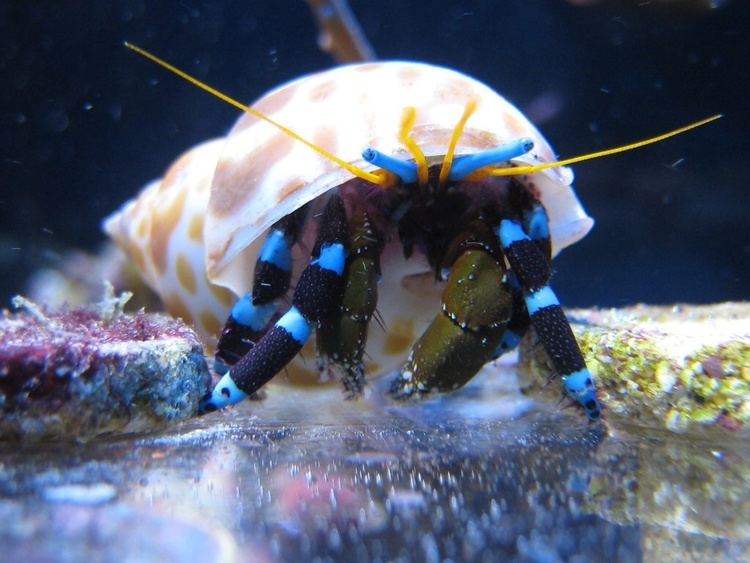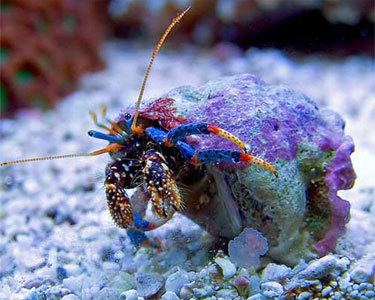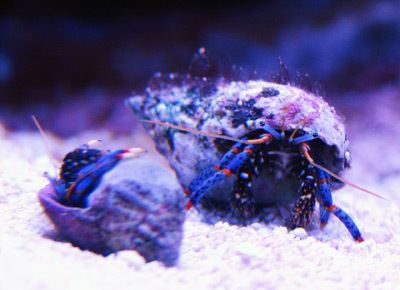Subphylum Crustacea Superfamily Paguroidea Rank Species | Order Decapoda Higher classification Clibanarius | |
 | ||
Similar Clibanarius, Hermit crab, Calcinus, Paguristes cadenati, Paguristes | ||
Dwarf blue leg hermit crabs clibanarius tricolor
Clibanarius tricolor is a hermit crab that lives in shallow water of the Caribbean Sea and is popular in the home aquarium trade. Its common names include blue-legged hermit crab, tricolor hermit crab, blueleg reef hermit crab, equal handed hermit crab and blueleg hermit crab.
Contents
Description
C. tricolor has blue legs with red banding, and reaches to 2 centimeters (0.79 in) in size.
Feeding
C. tricolor is a detritivore, eating dead plants and animals that would otherwise clog the reef.

It also eats green hair algae, cyanobacteria and seaweed. It even sifts through sand looking for food, cleaning the sand in the process.
In the aquarium

C. tricolor is a popular aquarium hermit crab because of its coloration and because its feeding habits lead it to clean tanks. It is emblematic of the public's shift from purely decorative animals to "working" animals that help sustain the aquarium's ecosystem, reducing the need for active management by the owner.

When it ejects from its shell and is not able to find a new one or the one it was just in it has been observed it then hides its soft body parts next to a sea anemone's foot for temporary protection.

During molting the crab will shed his exoskeleton. The exoskeleton tends to linger on the substrate. The exoskeleton resembles a crab that has been removed from his shell, often causing caregivers to believe the crab died.
